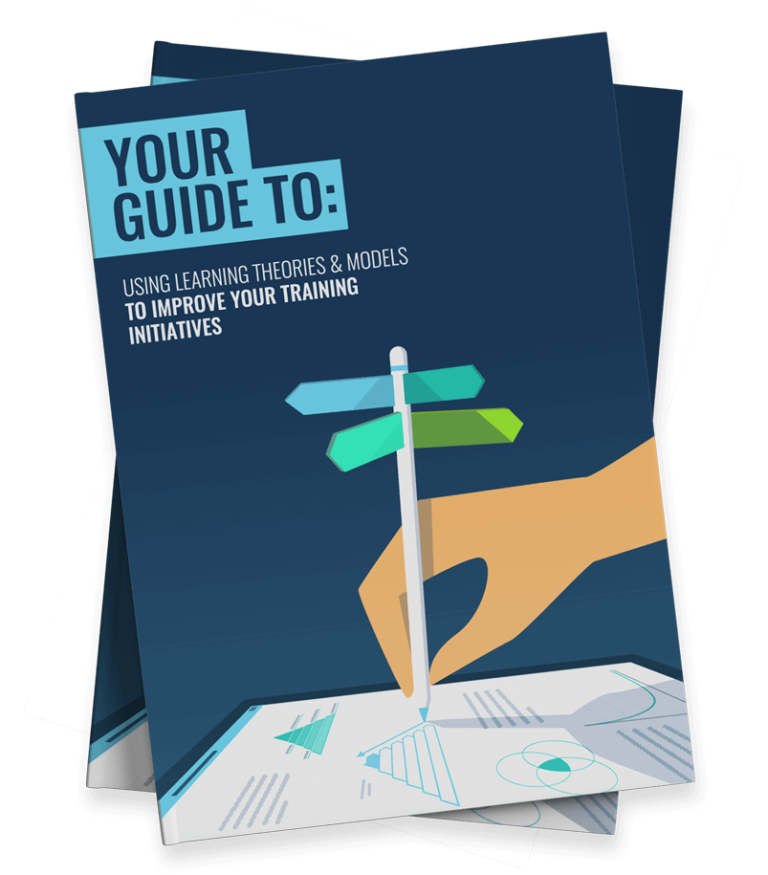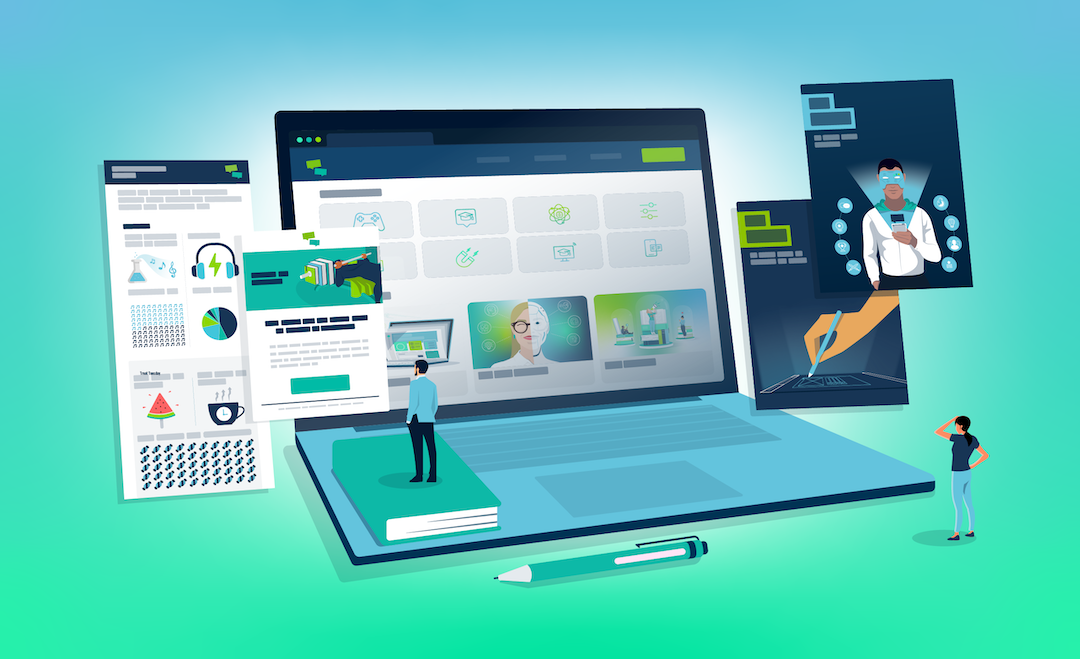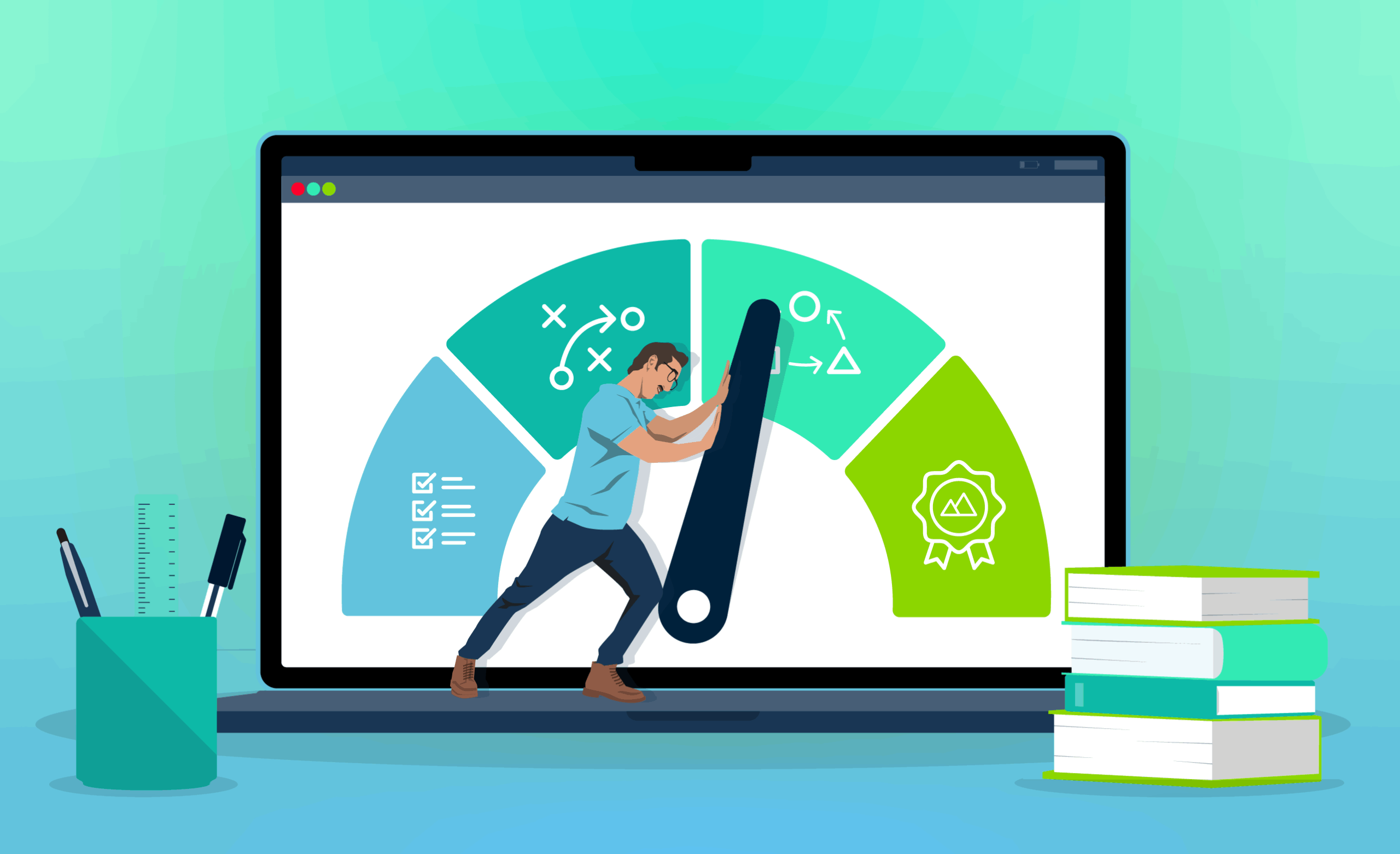Bloom’s Taxonomy is a concept you will come across pretty quickly once you start exploring the world of learning. Although you typically see it in the context of teaching children, it can be extremely beneficial at all learning levels.
This pedagogical framework can help you to meet the needs of your learners. In fact, Bloom’s Taxonomy has the power to help you change behaviour and get better results from your training programme.
This is true even in an adult learning environment. After all, our brains are wired to learn incrementally.
We layer concept upon concept as the subject matter grows in complexity. And that’s the key to creating the appropriate learning building blocks that help us reach top levels of understanding.
In this article, we’ll explore how Bloom’s Taxonomy can help in creating better learning experiences. But first, let’s meet the man behind the taxonomy.

Who is Benjamin Bloom?
Benjamin Bloom (1913-1999) was a renowned American educational psychologist. During his time, he worked as a university examiner, led a group of cognitive psychologists and served as an educational advisor to the governments of India and Israel.
He conducted research on various educational topics, including talent development, mastery learning and learning objectives. He was instrumental in shifting instructional focus from rote memorisation to practical application.
As Stanford professor Elliot Eisner puts it, ‘Benjamin Bloom left an imprint that will not soon erode. The field of education, and more important, the lives of many children and adolescents are better off because of the contributions he made.’
He’s best known for his taxonomy of learning, so let’s explore that next.
What Is Bloom’s Taxonomy?
Bloom’s Taxonomy is a pedagogical approach that helps you to measure the cognitive development of learners. Its hierarchical structure helps to track your learners’ depth of understanding, and ultimately determine if your training programme is working as intended.
Benjamin Bloom devised the model together with Max Englehart, Edward Furst, Walter Hill and David Krathwohl back in 1956.
In essence, Bloom’s Taxonomy classifies six levels of cognitive functioning. These levels provide a sense of structure for the various mental processes we go through while mastering a new topic or concept.
Subsequently, the model helps you to categorise your learning objectives into varying levels of complexity. After all, Bloom based the model on the notion that students learn better if they receive individualised education plans. Setting your learning goals according to your learners’ cognitive skill levels helps to meet that need.
The Revised Taxonomy (2001)
Bloom’s Taxonomy has been applied to education for decades, and it has developed over the years to include different domains. Similarly, it has gone through some key updates. Today, we are going to focus on the latest (and now most common) version, often referred to as ‘The Revised Taxonomy’.
Psychologists David Krathwohl and Lorin Anderson modified the original cognitive model in 2001. They published it with the title ‘A Taxonomy for Teaching, Learning, and Assessment: A Revision of Bloom’s Taxonomy of Educational Objectives’. The new version places greater focus on a more dynamic approach to education.
Krathwol and Anderson realised that educational objectives should not be shoehorned into fixed, unchanging spaces. Instead, the revised framework reflects a more active model of learning.
The original model outlined six main categories, described with nouns:
- Knowledge
- Comprehension
- Application
- Analysis
- Synthesis
- Evaluation
The updated framework, however, replaces these nouns with verbs to take into account that learning is an active process.
As you can see below, the newer framework also assigns greater importance to creating. It’s the top level learners can achieve according to the revised Bloom’s Taxonomy.
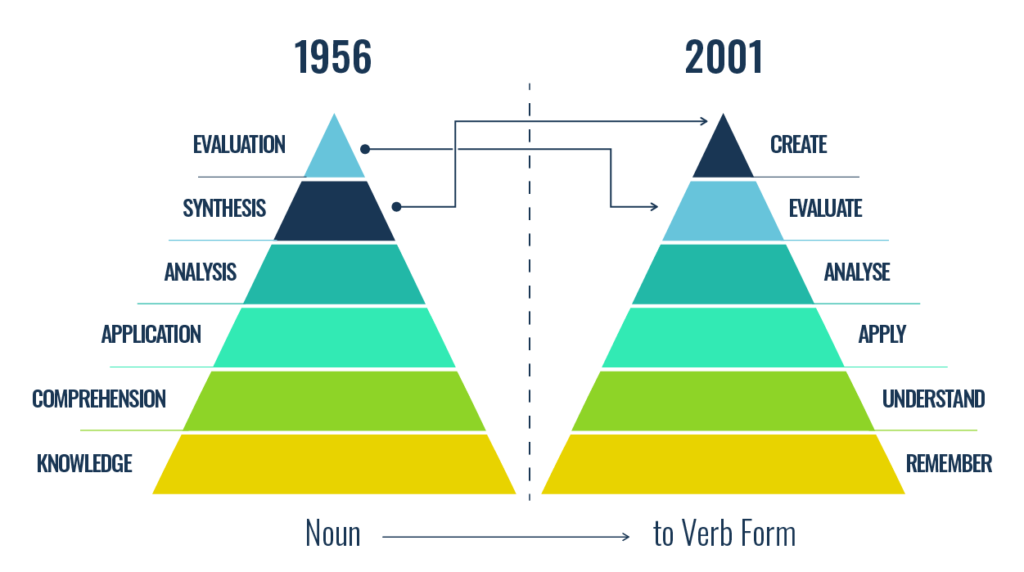
The Six Levels of Bloom’s Taxonomy
As we have explored, Bloom’s Taxonomy includes six levels. Just like in the 1956 taxonomy, the revised framework categorises the cognitive domain of learning into varying levels according to complexity and richness.
Each level comes with a series of verbs that describe the actions learners should be able to complete at that stage. In the original model, these verbs were nouns instead. Once they have mastered these verbs, they move up to the next level. As a result, the complexity level increases as they move up.
The basis for Bloom’s Taxonomy was a simple hypothesis. If you cannot remember a concept, you do not understand it. And if you do not understand the subject matter, you cannot apply it. Therefore, true expertise is impossible without first establishing foundations of remembering and understanding.
With that in mind, the framework is arranged into a continuum of cognition. The shape of a pyramid helps to illustrate how each level is dependent upon one another. For instance, learners cannot jump from the first stage to the fourth. They need to understand before they can apply and analyse before they can evaluate.
However, it’s essential to remember that not every learner will start from the first stage. Some of your learners may have already mastered certain skills. This allows them to jump in somewhere in the middle and begin climbing up from there.
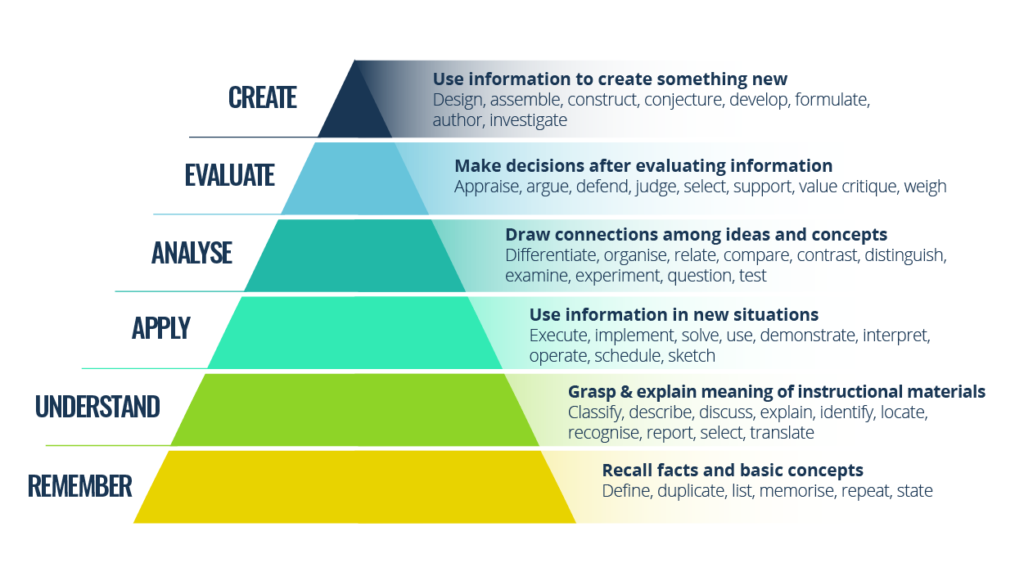
Knowledge Domain Verbs
Before we have a look at the six levels in more depth, let’s explore the verbs associated with each knowledge domain in the revised taxonomy:
| Remember | Understand | Apply | Analyse | Evaluate | Create |
| Recall specific information. | Grasp meaning of materials. | Use information in new situations. | Identify links among ideas. | Use knowledge to make judgements. | Develop something new. |
| define describe examine identify label list locate match memorise recall recite recognise record reproduce retell select state tabulate tell visualise |
associate classify compare contrast convert describe discuss distinguish explain illustrate interpret order predict relate report represent restate select summarise trace transform translate |
apply articulate calculate change chart compute construct develop employ examine experiment explain illustrate interpret manipulate modify operate predict produce relate solve transfer |
analyse categorise compare connect contrast criticise deduce diagram differentiate discriminate dissect estimate evaluate experiment infer organise plan prioritise question separate survey test |
appraise argue assess choose convince critique debate defend editorialise estimate evaluate grade judge justify measure persuade predict rank rate reframe summarise support |
adapt assemble compose construct create design develop facilitate hypothesise integrate invent modify negotiate plan propose revise role-play schematise simulate speculate support validate |
Next, let’s explore each level of the revised Bloom’s Taxonomy and identify how online learning can help you to provide appropriate learning experiences.
1. Remember
The first stage of Bloom’s original taxonomy was called ‘knowledge’. In the revised version, the level is called ‘remember’. It is a simple stage that focuses on the basic retention of new facts and information.
On top of being the simplest and most basic element of learning, there is another reason why it’s at the bottom of the pyramid. Remembering is essential as your learners cannot achieve anything else until they have a critical mass of facts in their working memory.
As such, learners who have mastered the first stage should be able to recall information and define key terms. Their understanding of a topic should be good enough to write, for example, a bullet point list of key concepts or find the correct search terms to expand their knowledge.
‘Remember’ in Online Learning
At this first stage, you need to deliver information to your learners in a memorable format. How you present this information is important.
You can use different eLearning assets to deliver the knowledge that your learners need. For example, make sure to use varied textual content, videos, animation, images and more to deliver engaging content to your learners.
To ensure they remember basic information, you can create quizzes to test whether they have absorbed the content as intended. Similarly, you can ask them to repeat key points of their training material.
This step is easy to administer as you’re only checking that your learners have been paying attention and they’ve absorbed the information. Determining their understanding comes in the next step.
2. Understand
The second level of Bloom’s Taxonomy moves beyond merely remembering. Learners need to demonstrate a contextual understanding of facts in order to master this step.
Knowing something is not the same as understanding it. After all, for the learning to have any real impact, it’s pointless to simply learn a sentence by rote.
At this step in the journey, you’ll want to check if your learners can translate the information into their own terms.
‘Understand’ in Online Learning
You can check your learners’ understanding in several ways. For example, your learners can show this by explaining facts to someone else, summarising the content accurately and performing more advanced research on the topic.
You can also use your learning management system (LMS) to assess their level of comprehension. After all, these kinds of learning platforms come equipped with flexible testing tools.
You can use, for example, your LMS’s social Feed or create a Club to start a topic thread where your learners can contribute meaningful insights to group discussions. You can also ask your learners to write a sample blog post or record a video that explains their understanding of the topic.
3. Apply
Once your learners understand the concept and have mastered their ability to take in information, they need to be able to apply this new knowledge to practical contexts.
And once they have mastered this step, they can use their newfound knowledge to solve a problem. For instance, you would ask them to ‘use what you have learned…’ or ‘demonstrate an occasion when you applied this knowledge’.
At this stage, they are well on their way to being able to use these skills in a more abstract way.
‘Apply’ in Online Learning
You can ensure your learners can apply knowledge through various learning activities. For example, you could create simple assignments where your students are given a basic framework and have to apply their knowledge in order to achieve the desired outcome.
Furthermore, you could create exercises on your LMS and host simulations, role-playing or scenario-based exercises online. These can be extremely effective in applying knowledge to different contexts while providing a safe learning environment.
4. Analyse
The fourth stage of the pyramid is all about analysis. Learners focus on breaking information into smaller parts to explore the relationship between complex ideas.
As a result, they can evaluate information effectively, compare and contrast concepts and find evidence to support their assertions. As such, it goes a step beyond simply applying the knowledge and demonstrates a deeper understanding.
Typically, at this stage, L&D professionals present the learner with a problem without giving too many clues as to the solution. After all, this extra challenge makes learning more engaging and leads to better results.
‘Analyse’ in Online Learning
Various online learning tools enable your learners to master their analysis skills. You can, of course, use testing functionality and questions on your LMS like you usually would. But that’s not all!
In fact, if you have a social LMS, you can unlock opportunities for effective informal learning. Tools like Clubs and the Experts Area encourage your learners to ask for advice while offering their own insights.
This helps them to take ownership of their professional development. And ultimately, this collaborative analysis adds more meaning to your training.
5. Evaluate
In the revised framework, the fifth stage is called ‘evaluate’. Mastering this level marks the point where learners have gained a new level of independence with the topic at hand. As a result, they know how to explain, apply and organise the information provided to them.
They can use everything they have learned to rearrange the pieces of information into new ideas that can be tested, debated and measured. As such, at this stage, you can expect your learners to come up with new ideas, suggestions and debates.
As your learners now have a firm grasp of the subject matter, they can draw on it on the spot to have spontaneous conversations and make recommendations based on their analysis. In addition, they now have the tools and knowledge to solve problems related to the topic.
‘Evaluate’ in Online Learning
Learners at this stage can take on more responsibility as they have an in-depth understanding of the topic. As such, you can set them up as Experts or have them tutor those who are still in the early stages of their learning journey.
You are now more than simply just training your learners. In fact, they can become the catalyst for real cultural change within your organisation or educational institution. And to maintain momentum, you need to have the right technology in place.
In this case, your LMS takes on a whole new purpose. It becomes a social network for everyone in the business, and it secures employee engagement from induction through to higher levels of professional development.
6. Create
And finally, it’s showtime. The ‘create’ stage means that your learners have reached the tip of Bloom’s Taxonomy!
As such, your learners now have all the cognitive skills they need to go out and apply this information to a myriad of new situations. This includes creating brand new resources to spread the knowledge.
As a result, once they’ve reached this final stage, your learners can generate ideas that have the potential to shape your organisation as a whole.
‘Create’ in Online Learning
While only a handful of training initiatives are robust enough to reach this stage, there is a lot that you can do to ensure your learners now have all the information they need to create and innovate.
Planning at this level takes a huge amount of collaboration. In fact, it’s essential to gather all the knowledge necessary from every branch of the organisation. Hence, your online platform needs to allow users to review and evaluate all the assets it contains.
With these capabilities in place, learners who are creating a new process can use all this information, fully confident that it’s accurate and up to date. This process also ensures that anything they end up creating is perfectly tailored to your organisation’s unique needs.
How Does Bloom’s Taxonomy Benefit L&D Professionals?
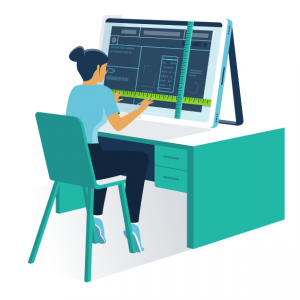
Bloom’s Taxonomy highlights the hierarchy learners take to synthesise information that enables them to think critically. After understanding this process of learning, it becomes much easier to create effective learning objectives.
Objectives, also known as learning goals, are an essential part of any training programme. After all, it’s important to establish your objectives so that your learners understand the purpose and benefit of their training.
Similarly, organising learning objectives helps you to clarify them to yourself and to your learners. After all, it becomes easier to identify, plan and deliver appropriate training material and design appropriate evaluation strategies, if you have a particular goal in mind.
As a result, essentially, Bloom’s Taxonomy helps you to ensure that your content and assessments are aligned with your objectives.
Following Bloom’s Taxonomy will ensure that you are addressing the appropriate level of learning when creating your objectives. After all, by providing action verbs, the revised model invites you to reflect on what you are asking students to do with the information they are set to learn.
And once you have identified the expected cognitive skill level your learners need to achieve and determined the specific knowledge or skills your training course will cover, you are ready to write your learning objectives. Let’s explore this in more detail!
Setting Objectives
You can create your objectives by combining the subject (your learner), the verb (what learners must know how to do) and the object (the knowledge they need to acquire).
For example, let’s form learning objectives for each level, where the object is Bloom’s Taxonomy:
| Level | Example Objective |
| Remember | By the end of their training unit, learners will be able to list the six levels of Bloom’s Taxonomy. |
| Understand | By the end of their training session, learners will be able to describe Bloom’s Taxonomy in their own words. |
| Analyse | After completing their training, learners will be able to use Bloom’s Taxonomy to set their own learning objectives. |
| Apply | By the end of this lesson, learners will be able to illustrate how Bloom’s Taxonomy translates into better learning objectives. |
| Evaluate | By the end of the training unit, learners will be able to defend their proposed hypothesis that Bloom’s Taxonomy is the best model for creating learning objectives. |
| Create | After their training course, learners will be able to create a comprehensive guidebook about Bloom’s Taxonomy. |
The clear structure of the model emphasises the importance of keeping your learning objectives clear and concise as opposed to vague and abstract. Simple, but extremely effective!
Final Words
Bloom’s Taxonomy has been around for decades, and it’s one of the most widely used models for setting learning objectives. And no wonder why! Above all, the framework essentially gives you the keys to pedagogical success.
Now you have the knowledge you need to set learning objectives that pack a punch! Therefore, it’s time to ensure your learning content matches the needs of your learners at each level.

